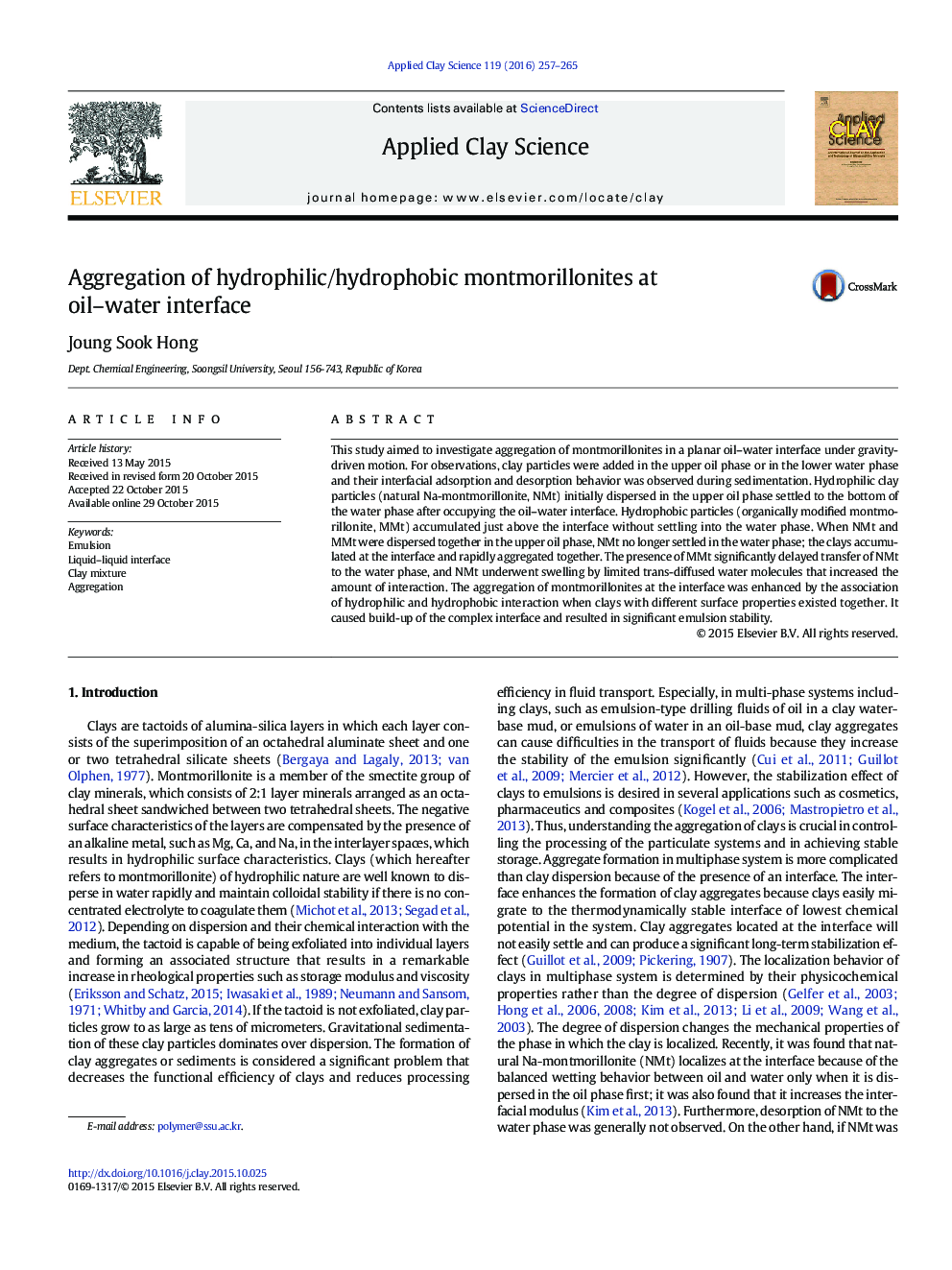| Article ID | Journal | Published Year | Pages | File Type |
|---|---|---|---|---|
| 1694218 | Applied Clay Science | 2016 | 9 Pages |
•Mixture of hydrophilic/hydrophobic montmorillonite aggregates at interface.•Clay tactoids are gradually swollen at oil–water interface.•Swollen clays are competitively associated with anisotropic hydrophobic clays.•Aggregation of clay mixtures gives a strong emulsion stability against coalescence.
This study aimed to investigate aggregation of montmorillonites in a planar oil–water interface under gravity-driven motion. For observations, clay particles were added in the upper oil phase or in the lower water phase and their interfacial adsorption and desorption behavior was observed during sedimentation. Hydrophilic clay particles (natural Na-montmorillonite, NMt) initially dispersed in the upper oil phase settled to the bottom of the water phase after occupying the oil–water interface. Hydrophobic particles (organically modified montmorillonite, MMt) accumulated just above the interface without settling into the water phase. When NMt and MMt were dispersed together in the upper oil phase, NMt no longer settled in the water phase; the clays accumulated at the interface and rapidly aggregated together. The presence of MMt significantly delayed transfer of NMt to the water phase, and NMt underwent swelling by limited trans-diffused water molecules that increased the amount of interaction. The aggregation of montmorillonites at the interface was enhanced by the association of hydrophilic and hydrophobic interaction when clays with different surface properties existed together. It caused build-up of the complex interface and resulted in significant emulsion stability.
